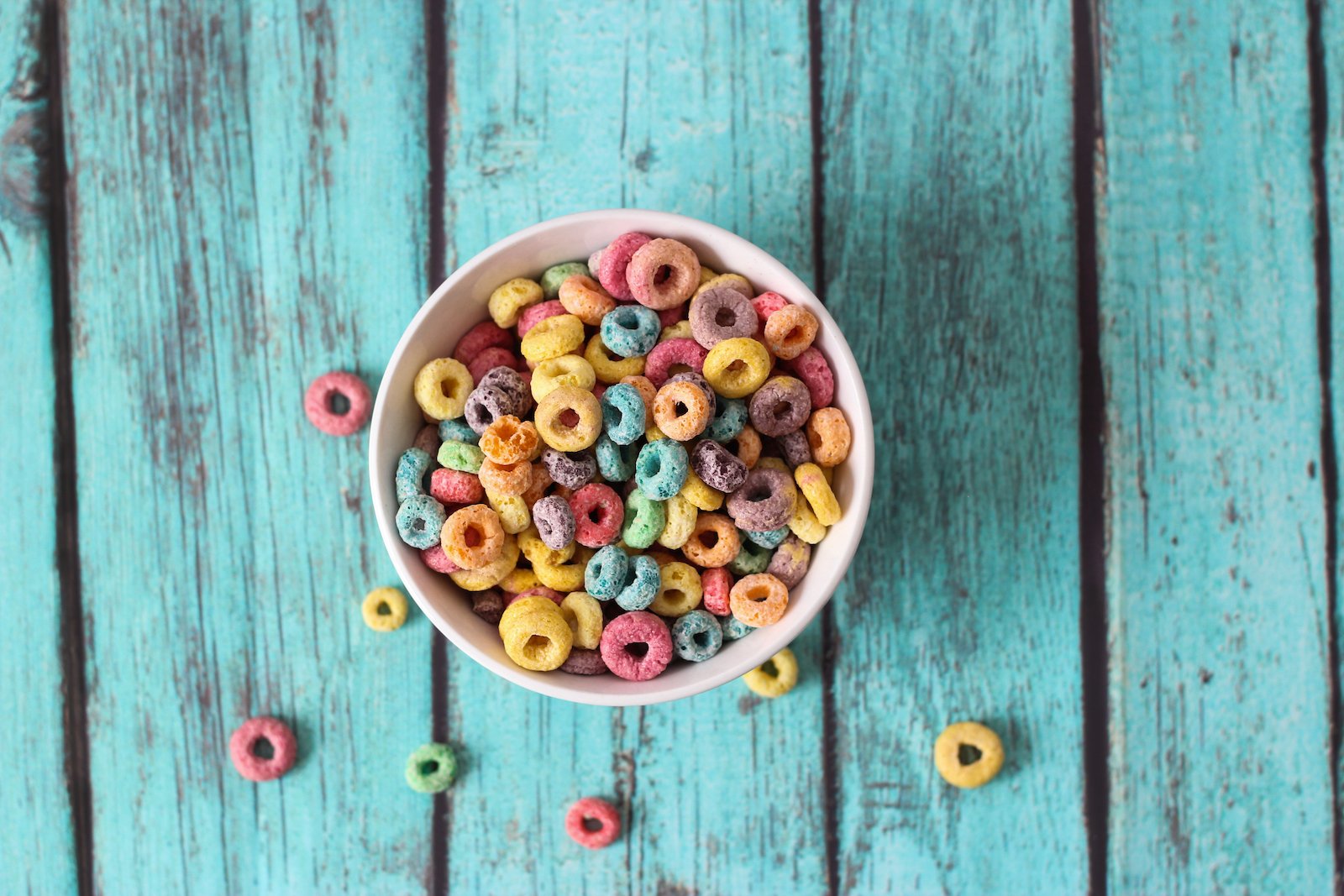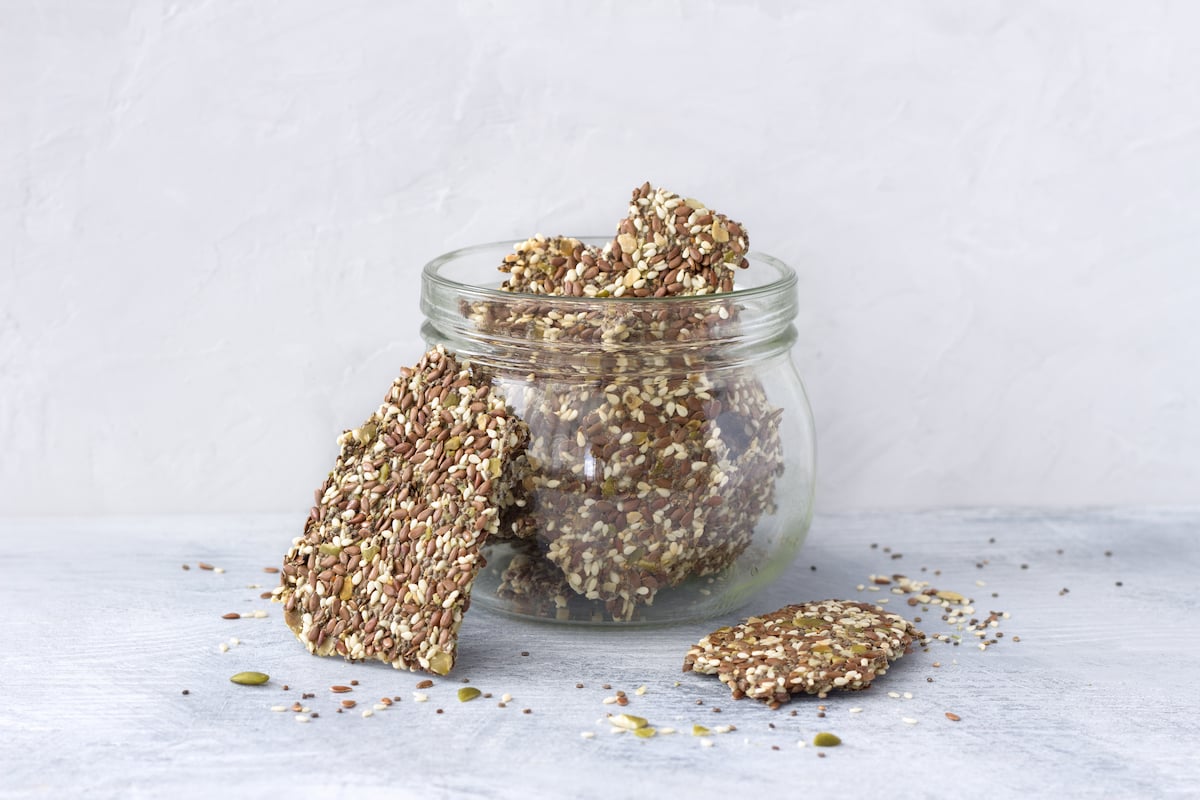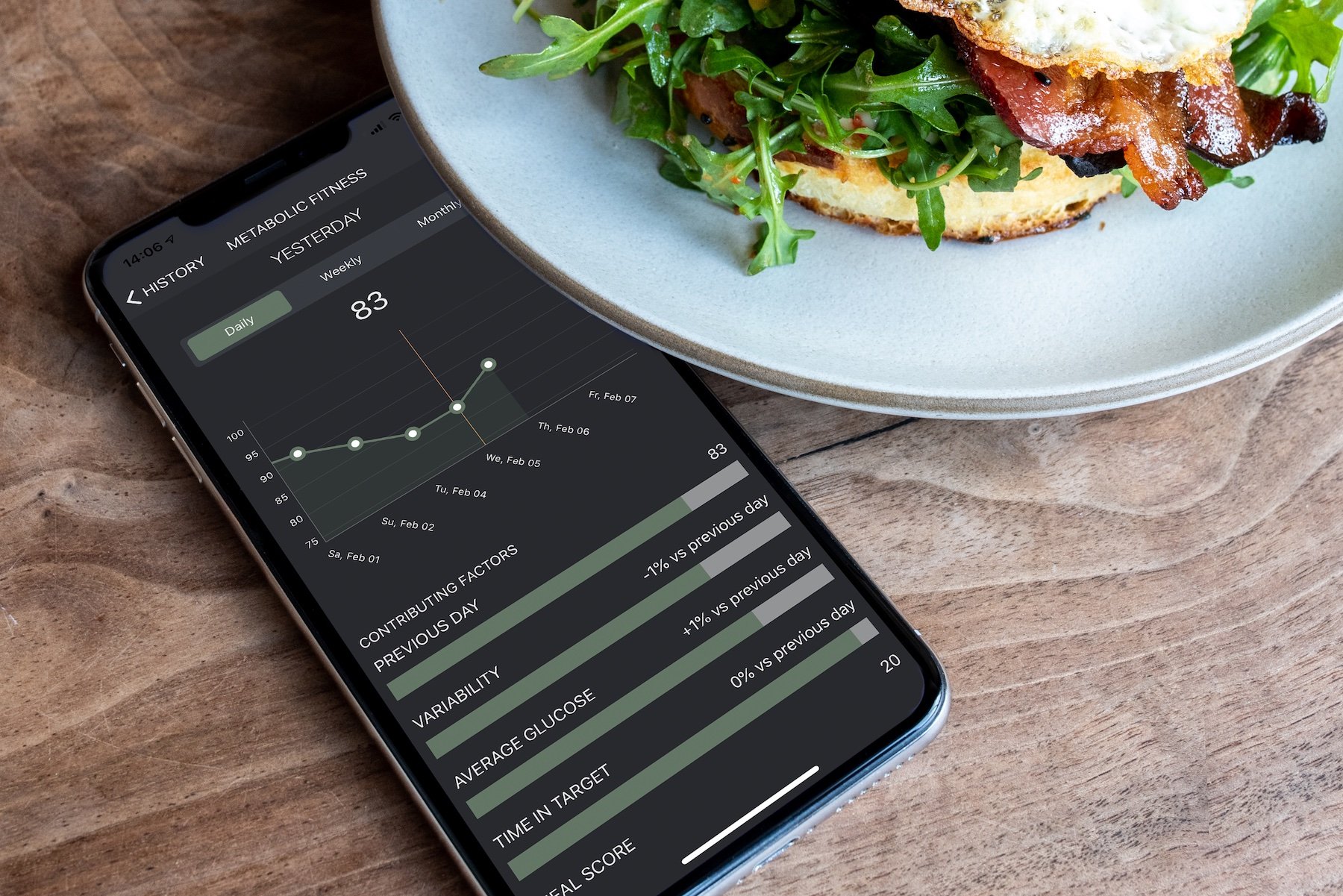Several factors can affect our metabolic health, but one of the most important things we can do is to keep our blood sugar levels stable. That means keeping average and fasting glucose levels in an optimal range, minimizing post-meal glucose spikes, improving insulin sensitivity, and exhibiting flexibility in utilizing different energy sources—including stored fat and glucose—for fuel.
The beauty of striving for improved metabolic health is that it is in our control. Where we fall along the spectrum of metabolic health has largely to do with our dietary and lifestyle choices and is dependent on making consistent, well-informed decisions.
This article will explain 12 strategies that research shows positively impact glucose levels. Still, metabolic health is individual, and what affects someone else’s glucose may not affect yours. Your best bet is to eat a diet of real, whole foods, get plenty of sleep, exercise regularly, and minimize stress.
1. Avoid added sugar and refined foods.
If you’re aiming for stable glucose, a good general rule of thumb is to avoid food that is made in a factory or doesn’t look at least somewhat like its original form in the wild. While there are exceptions (i.e., tofu, cheese, healthy snacks), aim to at least eliminate these ingredients: added sugars of any kind, refined grains (i.e., anything made with refined flour), and refined fruits (i.e., juice).
If a nutritional label has a non-zero value next to “Added sugars,” it’s not an ideal choice for metabolic fitness. Even innocuous items like protein bars can have as much as 15 or more grams of added sugar. Additionally, products labeled “low-sugar” or ” low-glycemic” can still be full of added sugars. The truth is, we don’t need any added sugars in our diet for health. And these aren’t only in foods like soda and candy bars but also in less obvious foods like ketchup, salad dressing, and pasta sauce.
The fructose in added sugar may cause insulin resistance and increase hunger, driving people to eat excessive amounts of food. Naturally occurring sugars in their whole food form, like sugars in fresh fruit, generally have less of an effect on glucose levels, as they are surrounded by unprocessed fibers and other nutrients, which slows digestion.
“Short bursts of activity multiple times per day lowers glucose more than one big chunk of exercise once a day.”
Generally speaking, most food in its unrefined form will cause less of a glucose spike. A 1988 study finds that when eating the same caloric amount of whole grains (least processed), coarse flour (more processed), and fine flour (most processed) there is a stepwise increase in insulin elevation as the grain becomes more processed. The study also finds an increase in glucose levels after eating the wheat-based meal, but not the maize-based or oat-based meals.
If you want to get your glucose to a more optimal level, a continuous glucose monitor (CGM) allows you to know exactly how you respond to specific foods. But in general, choose foods that are unlikely to cause a big spike. These include whole food forms of beans, tofu, chickpeas, green leafy vegetables (spinach, lettuce, collards, kale, chard), eggs, blueberries, blackberries, garlic, onions, mushrooms, zucchini, asparagus, broccoli, cabbage, cauliflower, celery, cucumber, peppers, avocados, fish, lean red meat, chicken, oils, olives, chia seeds, and apple cider vinegar.
Additionally, phytochemicals and antioxidants, particularly polyphenols, in unrefined versions of plant foods can enhance the cellular processes that lead to optimal glucose regulation.
Bottom line: Consuming unrefined, low-glycemic foods will likely lead to lower glucose spikes and improved metabolic health over time. CGM allows you to see exactly how a particular food and portion size affects your glucose response. Eating vegetables and fruits, which contain polyphenols, may improve glucose regulation.
Related article:
2. Exercise regularly.
Exercise of pretty much any form (including mild aerobic activity, moderate aerobic activity, high-intensity interval training, and resistance training) improves metabolic fitness and glucose control. One study found that a single 70-minute session of exercise at a mild intensity (50% VO2 max) significantly increased insulin sensitivity the very next day.
Additionally, a large body of research shows that moderate aerobic exercise for 30+ minutes, 3+ times per week, for 8+ weeks improves insulin resistance and glycemic control.
Similarly, high-intensity training actually improves insulin sensitivity in as little as two weeks. In less than 12 weeks, it can also improve fasting glucose.
You can optimize the timing of exercise for glucose control. Short bursts of activity multiple times per day lower glucose more than one big chunk of exercise once a day. One study compared three exercise regimens that all add up to 60 minutes of active exercise per day, plus rest:
- 20 sets of a 1-minute jog followed by 30 seconds of rest before meals (repeated 3 times a day)
- 20 sets of a 1-minute jog followed by 30 seconds of rest after meals (repeated 3 times a day)
- 3 sets of a 1-minute jog followed by 30 seconds of rest, (repeated 20 times a day, every 30 minutes)
The study found that short but regular bursts of exercise were most effective in reducing post-meal glucose spikes. (Many Levels members opt for being active in short bursts throughout the day to keep glucose down, rather than doing one big chunk of exercise before or after a meal.)
Similar effects hold for walking. Another study compared two walking regimens, both of which added up to 30 minutes over nine hours:
- A single 30-minute block of walking
- 18 sets of 1 minute and 40 seconds of walking every 30 minutes
This study showed that the frequent, short walks in scenario 2 were significantly more effective at reducing post-meal glucose peaks and insulin levels than a single long period of walking, despite both groups doing the same number of total walking minutes.
Bottom line: Exercise of any type helps with glucose control and metabolic fitness. Short, frequent bursts of exercise seem to be more effective than longer, isolated chunks of exercise. Try to be active throughout the day!
Related article:
3. Prioritize sleep.
Sleep is critical to glucose regulation and metabolic health. Restricting sleep to 4 hours per night for just 5 days has been shown to significantly decrease glycemic control and metabolic fitness. In one small study of 11 healthy young men, this amount of sleep deprivation produced a higher glucose response to the same breakfast and a 40% lower rate of glucose clearance from the blood during a glucose tolerance test compared to when they were allowed up to 12 hours of sleep per night. In fact, the study found that partial sleep deprivation generated metabolic responses in otherwise healthy young men that appear to be similar to older adults with impaired glucose tolerance.
Just a short stint of sleep deprivation can send the body into pathologic metabolic states. Luckily, as little as 2 days of improved sleep duration may reverse this..
Less substantial sleep deprivation can also impair metabolic health. A recent, small 2024 study of 38 healthy women found that when they slept 1.5 hours less than normal — for an average of 6.2 hours of sleep per night — for six weeks, both fasting insulin and insulin resistance increased.
Bottom line: You need good sleep (7-9 hours per night for most adults) for proper glucose regulation. No matter how good a diet is, sleep still plays a key role in metabolic function.
Related article:
4. Minimize stress.
Stress raises glucose levels, and if we want optimal metabolic health, we must manage our stress.
Studies have shown a significant correlation between perceived work-related stress and increased levels of circulating glucose. Acute stress increases levels of the hormone cortisol, which triggers the body to make glucose so that the body has energy to deal with the stressor.
Additionally, in mice, acute psychological stress—in this case, getting repeatedly shocked on the foot and then failing to escape a box—leads to acute insulin resistance in the liver (but not adipose tissue or skeletal muscle), with significantly higher glucose levels after a glucose load compared to mice who weren’t stressed.
Fortunately, stress management techniques can reduce glucose levels. A small study of 64 women with Type 2 diabetes showed that those who engaged in 20 minutes of daily diaphragmatic breathing exercises had reduced fasting blood glucose and post-meal glucose levels after nine weeks compared to those who did not do the breathing exercises.
Additionally, six months of twice-weekly meditation practice in people with coronary artery disease resulted in a significant decrease in fasting blood sugar, post-meal blood sugar, and HbA1c (average blood glucose over the past three months), according to a small study of 60 people, mostly men.
Bottom line: Stress can negatively impact glucose levels. Self-care, including meditation and deep breathing, can promote improved glycemic control and metabolic fitness.
Related article:
5. Get more fiber.
In insulin-resistant people, high amounts of fiber are associated with lower post-meal glucose levels, insulin levels, and glycemic variability (up-and-down swings in glucose). A study of 18 people with Type 2 diabetes found that those who ate about 51 grams of fiber per day had better glucose-related metrics than those who had the same amount of calories per day but only about 15 grams of fiber. Sources of fiber in the study include two servings of vegetables and two servings of fruits per day, legumes, and whole grains. Other fiber sources include seeds (flax, chia, and others), beans, and nuts. A 2020 meta-analysis showed that eating more fiber lowered the risk of Type 2 diabetes in women.
Bottom line: High-fiber diets appear to improve glycemic control in people with Type 2 diabetes. Without being vigilant, it’s easy to not get enough fiber in the diet. To eat 50 grams of fiber per day, you must make an effort to include fiber sources (including beans, nuts, seeds, vegetables, fruits, or whole grains) at every meal. You can also consider taking a fiber supplement.
Related article:
6. Eat fat and protein first.
“Preloading” meals with fat or protein can minimize the quick absorption of glucose into the bloodstream.
In a small study of 35 people, consuming 23 grams of protein and 17 grams of fat (via a boiled egg and parmesan cheese) 25-30 minutes before glucose ingestion significantly decreased post-meal glucose elevation in both people with and without diabetes.
Similarly, eating fat alone in conjunction with carbohydrates may decrease the post-meal glucose spike. Research showed that eating 90 grams of almonds (about 45 grams of fat) with a meal of white bread leads to significantly lower post-meal glucose spikes than eating white bread alone.
Bottom line: Eating carbohydrates alone is likely to spike glucose more than eating carbohydrates with fat and protein. For optimal metabolic health, snack on high-protein or high-fat foods before a meal.
7. Limit saturated fat.
While fat remains a controversial nutritional topic, consuming large amounts of saturated fat has been shown to acutely decrease whole-body insulin sensitivity by about 25%. Saturated fats include fatty cuts of beef, pork, lamb, dark chicken meat, poultry skin, dairy foods (milk, butter, cheese), tropical oils like coconut and palm oil, and margarine. Swap saturated fats for unsaturated fats, like those found in nuts, seeds, olives, olive oil, avocado, fish, soybeans, and tofu.
Bottom line: Try not to overdo it on saturated fat, as it seems to be associated with lower insulin sensitivity. Favoring unsaturated fats is likely better for metabolic function.
8. Try intermittent fasting.
Intermittent fasting means restricting food intake for long periods of time, sometimes for 24 hours or more. A small case report in three people with Type 2 diabetes showed that intermittent fasting for 24 hours, 3-4 times per week, could meaningfully reverse diabetes in as little as 7 months. Within 3 weeks of starting their fasting regiments, all 3 participants regained enough insulin sensitivity to get off their high doses of insulin medication. One participant, who initially was taking 102 units of insulin daily, discontinued all insulin injections after just 5 days of fasting!
Intermittent fasting is thought to alter gene expression, hormonal pathways, and cellular physiology to improve metabolic fitness and insulin sensitivity.
While many people do intermittent fasts for shorter periods of time, the metabolic benefits of fasting don’t seem to start until around 12 hours into it. At that point, your body begins to switch to relying on fat for fuel. Research is mixed on the metabolic benefits of shorter fasts.
Levels co-founder Josh Clemente has done extended fasts in which he has seen his average glucose gently trend down into the optimal range and remain there with only 2-3% variation for days at a time, his body turning to fat-burning pathways (and production of ketones) to keep him energized.
Bottom line: Twenty-four-hour fasts can improve insulin sensitivity. For practical purposes, this means eating a meal such as breakfast and then not eating calories until the same time the following day.
Related article:
9. Eat earlier in the day.
“Time-restricted eating” means consuming all your day’s worth of calories in a relatively short window and abstaining from eating the rest of the time. One small study in 11 people with overweight without diabetes showed that even engaging in time-restricted feeding—in this case, only eating between 8 am and 2 pm—for just four days significantly lowered fasting glucose (in the morning but not evening), fasting insulin, and mean glucose levels while asleep, compared to when they eat between 8 am and 8 pm.
Timing of food intake matters too: Our bodies are naturally more insulin-resistant at night. So, eating the same food in the morning tends to have much less of a glucose spike than eating it at night. One small study with 11 participants showed that eating food later in the evening, at 8:30 pm, caused a significant increase in glucose levels compared with eating the same meal in the morning at 9:30 am.
Bottom line: Consider eating during an approximately 8-hour window each day, and have your last meal at least three hours before bedtime. Eating later in the evening negatively affects glucose levels more than eating the same foods earlier in the day.
Related article:
10. Add vinegar to your meal.
Vinegar has a glucose-lowering effect when you eat it with a meal. One small study showed that consuming about 1 ounce of white vinegar with white bread that contains 50 grams of carbohydrates (a carbohydrate-rich meal) lowered post-meal glucose spikes and insulin levels. A 2020 meta-analysis of 10 studies seemed to back up that finding, showing that apple cider vinegar lowered fasting glucose levels.
Bottom line: Taking in a small amount of vinegar along with a carb-rich meal appears to generate a lower post-meal glucose spike.
Related article:
11. Sprinkle the cinnamon.
Compounds in cinnamon have been found to improve insulin signaling and glycemic control through several potential mechanisms. This is true even in people without diabetes: A study of 41 healthy adults found that cinnamon improves post-meal glucose levels. For the study, people ate 1 gram, 3 grams, or 6 grams of cinnamon per day for 40 days any way they liked, although the researchers recommended mixing it with apple and milk. At the end of the study, people who ate any of the three daily cinnamon doses had lower post-meal glucose levels after a standardized breakfast. Those who took 6 grams of cinnamon had the largest drop—from a mean of 106 mg/dL to 92 mg/dL—and reduced pre-meal glucose levels, indicating that they had lower baseline glucose. A 2024 randomized control trial in people with obesity and prediabetes also saw significant impact on 24-hour glucose levels measured by a CGM from 4g of daily cinnamon for four weeks.
Bottom line: Cinnamon may be a helpful adjunct in the quest for improved metabolic fitness. Given that high post-meal glucose spikes are associated with worse health outcomes, cinnamon may be an effective way to blunt these surges.
Related article:
12. Don’t chug water with meals
Interestingly, multiple small studies have shown that drinking a medium amount (e.g., a glass) of water with a meal may increase glucose levels, likely because the fluid load speeds the entry of food into the small intestines for rapid glucose absorption. With that said, good hydration overall is an important part of metabolic health, so never skimp on water; just try to be smart about when you drink it in relation to meals.
Bottom line: Space out liquids at least a half hour from meals.

















